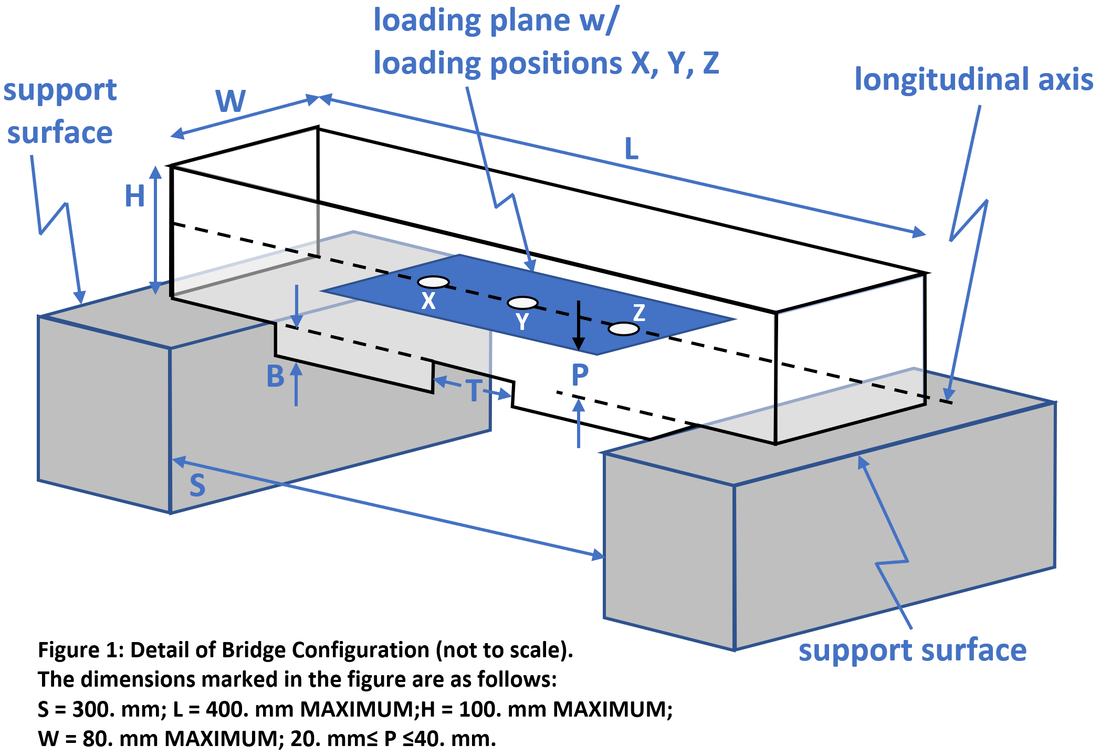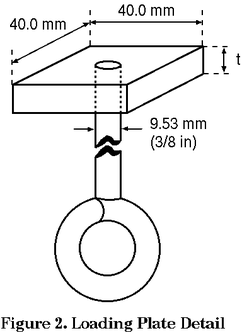2022 NEPA Regional Bridge Building Competition Criteria
These rules have been developed by the International Bridge Building Committee for the 2022 International Bridge Building Contest to be held on Saturday, May 7, 2022 in Moscow, PA, USA. These rules have also been adopted by the Northeast Pennsylvania Regional Bridge Building Competition to be tentatively held Saturday, February 26, 2022 (Snow Date TBD, 2022) at North Pocono High School in Moscow, PA.
In order to receive official wood and participate in the contest, contact Paul Schneider by e-mail at nepabridge@gmail.com. Each school is limited to three bridges from 3 different competitors (NO TEAMS ARE PERMITTED). Students may participate in person, by proxy, or by mail entry.
The competition is currently planned for in-person participation but may become a virtual competition depending on CDC Guidelines at the time of the competition.
Please visit our website www.neparbdgblg.com for specific suggestions and information relative to our competition. If you have any questions, please feel free to contact: Paul Schneider at nepabridge@gmail.com.
The object of this contest is to see who can design, construct and test the most efficient bridge within the criteria established below. Model bridges are intended to be simplified versions of real-world bridges, which are designed to permit a load to travel across the entire bridge. In order to simplify the model bridge design process, the number of loading positions is reduced, and to allow the contest to proceed in a reasonable amount of time, only one loading position is actually tested. These simplifications do not negate the requirement that the bridge must be designed to accept a load at any of the positions. Bridges determined by the judges to not meet this requirement will be disqualified and tested as unofficial bridges.
| |||||||
|
1. Materials
|
2. Construction
3. Loading
- The bridge mass shall be no greater than 25.00 grams.
- The bridge (see Figure 1) must span a gap (S) of 300. mm, be no longer (L) than 400. mm, be no taller (H) than 100. mm above the upper support surface, and no wider (W) than 80. mm at the loading surface.
- The bridge must be constructed to provide a horizontal support for the load (see 3.4) at each of the three possible loading locations. Any portion of the structure above the loading plane must provide clearance for the plate and the loading rod above as well as for the rod projecting below the loading plate (see Figure 2).
- The bridge must be constructed to allow a 48. mm diameter, 300. mm long pipe (1.5 inch schedule 40 PVC pipe) to be passed horizontally across the bridge with the pipe's lower surface on the loading plane (P) between 20. and 40. mm above the support surface. This pipe must touch all three loading locations simultaneously (see 3.4).
- The bridge structure may project a maximum of (B) of 30. mm below the support surfaces (see Figure 1) at any location
except for a distance (T) 20. mm TOTAL, A minimum of 10. mm to the left and 10. mm to the right of Loading Point (Y).
3. Loading
- On the day of the competition, the judges will decide which one of the three loading locations will be used; it will be the same for all bridges.
- Competition loading will stop at 50. kg, loading will continue until bridge failure (see 4.5).
- The load will be applied by means of a 40. mm square plate (see Figure 2) with a thickness (t) of at least 6. mm but less than 13. mm. A 9.53 mm (3/8 inch) diameter linkage is attached from above and below to the center of the plate. The plate will be horizontal and will be mounted with its edges parallel to the longitudinal axis of the bridge. Force will be applied to the loading plate by means of an apparatus shown schematically in Figure 3. The minimum initial load will be approximately 2. kg.
- The load will be applied with the center of the plate at one of three (3) possible locations on the longitudinal axis of the bridge: The center, 40. mm to the right of center, and 40. mm to the left of center of the bridge span (see Figure 1). The three (3) loading locations must lie in the same horizontal plane (P). This loading plane must lie a distance (P) between 20. mm and 40. mm above the support surface.
|
4. Testing
E = Load supported in grams (50,000g maximum) / Mass of bridge in grams
|
|
5. Qualification
|
Decisions of the judges are final; the above rules will not change for the Northeast Pennsylvania Regional Bridge Building Competition even if the International Rules are changed after our printing of this criteria unless posted here. If any changes occur after original posting ALL registered participants will be notified. The loading apparatus may vary from the configuration shown.
Published: 10-Jan-2021 Updated Section 3 to match pdf specifications: 29-Jan-2021
2021 NEPA Regional Bridge Building Competition Criteria
2021 NEPA Regional Bridge Building Competition Criteria



